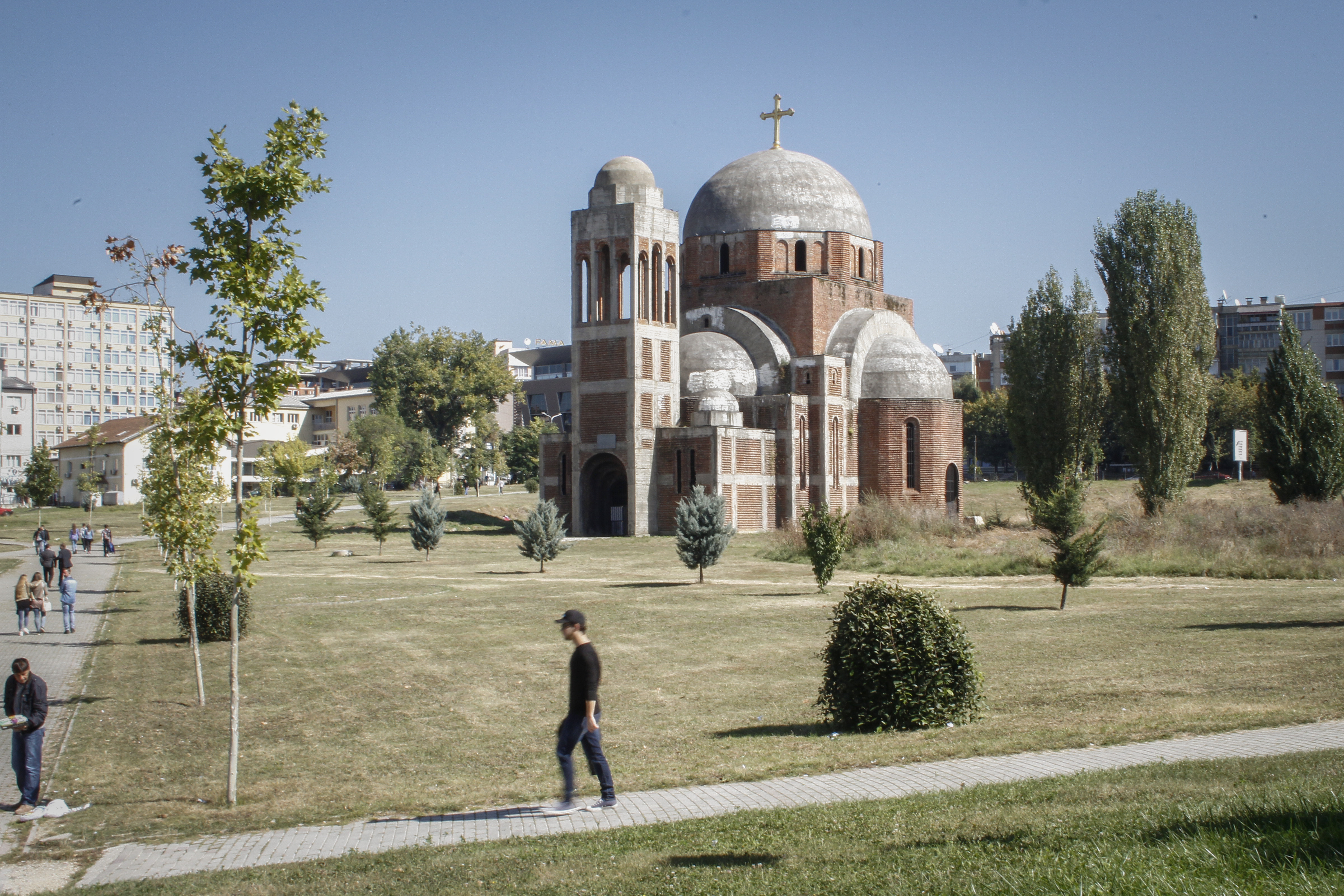Every frame in my memory of the unfinished Serbian Orthodox Church on the campus of Prishtina University is washed in a ghostly grey feeling, of a hollow building surrounded by blackbirds, with overgrown, unkempt grass.
There is a reason why the giant structure with the golden cross piercing the skies stands out in this way in my memory — and, I believe, in the collective memory of my generation. We tried helplessly to look away as we witnessed its construction in the early 1990s, an imposition on the grounds of a university which we were not allowed to attend, at a time when our whole society was undermined every day, humiliated in every way.
There is a reason for the current heated debate over its future. It is a debate that we have been unable to have for the past 17 years, as we waited for international justice to deliver justice, as we tried and tested what precepts of transitional justice work for us, as we tried to make sense of events and struggled to find the best way to commemorate the past.
As we, in the name of moving forward and creating a heroic narrative, made compromises about how we would come to remember that past; as we cringed, often on our own, at how the suffering, still very vivid for many of us, became a matter of semantics — a conflict, if you wanted to appear objective and neutral, or a war, if you wanted to show your stripes; as we tried to manage our anger at policies that had destroyed the lives of so many; as we tried to rebuild our lives and build our own state, a country that emerged on those very moral grounds of unprecedented repression and war crimes committed against us.

There is no question over what we feel that particular object on the university campus represents. For each one of us the structure is a reminder of those terrible times, not because it is sacred to some but because of the circumstances in which it came to be. But today, as we build a state which derives its legitimacy in part from how it treats its minorities, while still bullied by our former oppressor, we need to move beyond feelings. We have a chance to choose how to interpret this past. We must learn from others.
This is why I think that it is particularly useful to think about the Serbian Orthodox Church on the university campus along the same premises as the debate that has been taking place for some time in the United States over the legacy of slavery.
Across the United States, university campuses and museums — usually the avant-garde in these important conversations — are questioning the legacy of slavery and engaging in very serious soul-searching about the monuments and statues that are named after slave owners or that glorify the history of those who once repressed others based on their ethnic, religious or racial identity.
While there has been no conclusion, with each institution trying to find its own middle ground — some deciding to take down the statues and others to take no action at all — there is a prevailing consensus that these monuments should be degraded to relics of the past: “instruments of education rather than objects of veneration,” through which younger generations can learn about violence, repression and apartheid.


Hi Second Opinion - Thank you for your comments. All of the articles from external contributors posted in our 'Perspectives' section are the personal opinions of the writers themselves, and not necessarily those of K2.0. They should have all had our 'Disclaimer' at the bottom for clarity when publishing, but we realized that this was missing in a number of cases, so we went back to add them in. K2.0
Dear 2.0 Is it me or DISCLAMER of yours was not there when I first commented on this article? Awaiting your kind reply. Best,
I looove the comment. And I'm sad that 2.o came publishing this article. I had respect for you.
Dear 2.0, dear author, After reading this article of yours, which is well written, all credits due, as always I try to give a second opinion on the matter. There is no day that I dont pass this building and admire how come it still stands, same as I feel when I visit the Sinan Pasha's mosque in Prizren, or Deqani monastery as well. How come that after 25, 450, or 600 years of mutual repression and hatred this monuments have been standing still today??? I think the answer on that question is simple, stones putted together in the name of any religion (that mostly preaches peace in stead of war) is not harmful for others, and definitely should not represent the " time of repression". If that is the case than all churches in Middle east should be preserved as a monument of Crusade crimes, African Americans together with native Americans should "burn the White house" because it represents a way of their oppression??? Kosovo has a long and bloody history with all of its people. War is not good for anyone. 17 years after the last one we had I still see people in risk of loosing their "ultranational identity" and hurdling to burn a church or two, trow a rock over the bridge on the south side or just denying each others existence in all the possible ways. I dont care who came first to this cursed land and who putted the first flag or who threw a first rock. PEACE IS NOT A LACK OF CONFLICT BUT PRESENCE OF JUSTICE!!! And justice is what we need! Not toward objects but towards individuals and their acts. Therefore I really hope that what ever is to be done with this object in question its not used to humiliate the "other" but towards a path of common future.